Introduction
The state of Jammu and Kashmir is located in the northern Himalayas in India. The state is famous all over the world for its ethnic/heritage and region-specific foodstuffs such as Kashmiri apple, Kashmiri saffron, and Kashmiri wazwan. These ethnic- and region-specific foodstuffs of Jammu and Kashmir have earned a distinction in international as well as domestic markets. The Kashmir valley is world famous not only for its natural beauty but also for its cultural richness. Kashmir has been described as an ancient region possessing a distinct ethnicity, character, language, dress, customs, rituals, and a rich cultural heritage. The culture of Kashmir valley in India is very diverse, multicolored, and multifaceted. The Kashmir valley is a brilliant blend of different ethnic groups and social entities, an amalgamation of numerous civilizations that have inhabited the Kashmir valley, from time to time, and have left their impression on the culture of Kashmir. During the past 5,000 years of its history, Kashmir has been at the crossroads of various civilizations and religions. Kashmir has been influenced by Chinese, Indian, Central Asian, and Persian civilizations and cultures. Kashmir is said to have close cultural relations with present-day China, Tibet, Central Asian cities, Afghanistan, and Iran [1]. All these factors have contributed immensely to the evolution and development of present-day Kashmir and Kashmiri culture.
The history of the Kashmir depicts various culinary practices that amalgamated into Kashmiri cuisine embodying the cultures of the different settlers. The specialty meat product of the Kashmir valley is wazwan, which is a combination of ethnic meat products. The blend of various aromatic spices with meat and meat products is the basis for ethnic/heritage Kashmiri meat products. Kabab, methi maaz, rogan josh, aab gosh, rista, nate-yakhni, tabak maaz, and goshtaba are some of the important meat products of wazwan prepared from prerigor hot boned tender lamb or beef meat [2], [3], [4]. The local knowledge and information pertaining to the ingredients, local taste preferences, and history of the product formulations passed down from generation to generation. Along with researchers and academicians, the meat industry is trying to develop ethnic wazwan meat products for the domestic as well as international markets [5]. Because of their highly appealing flavor, texture, palatability, and popularity, there is a vast potential to introduce them at the national level and to promote their export. Thus, researchers need to focus on standardization of these products and their mechanized production. This paper reviews the processing, quality characteristics, underlying problems, and approaches for the development of some important ethnic meat products of Kashmiri wazwan.
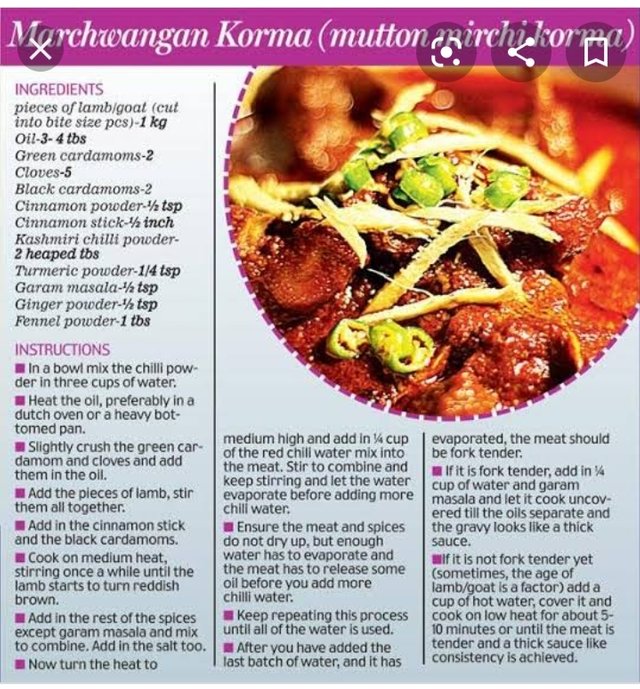
of ethnic meat products of Kashmiri wazwan
The food habits of the majority of the of Kashmir are predominantly nonvegetarian. Wazwan is the ultimate name in Kashmiri banquet and is a formal meal prepared on special occasions such as Kashmiri weddings. It is also being processed at fast food corners, restaurants, star hotels, etc., and is relished by one and all visiting Kashmir because of its unique taste. Wazwan is a multicourse meal, and the main ingredient of this meal is meat from sheep, goat, or beef, although other elements such as chicken, fish, and vegetables are also there. The origin of the Kashmir's ethnic/heritage cuisine—wazwan—dates back to the 14th century when the Mongol ruler Timur invaded India in 1348 during the reign of Nasiuddin Muhammad of the Tughlaq dynasty, who brought skilled persons of various professions including cooks from Samarkand to Kashmir [1], [6], [7]. These skilled cooks, called wazas in the local language, cooked meat into various dishes and classified them according to shape and gravies used for their preparation. The credit for popularizing wazwan dishes goes to Persian and Sanskrit immigrants. The term waazi is basically a Sanskrit term waja, which means to cook. The origin of the term has also been derived from a Persian word, ashpaaz, which means a special cook proficient in making soups, and with the passage of time the term became waza [1]. The basic prerequisite of a wazwan is that freshly slaughtered meat is used for its preparation. After acquiring the meat, the waza sorts it out for the different types of dishes—for example, ribcage is used to make tabakh maaz, whereas boneless meat is ground and is used for preparation of kabab, rista, and goshtaba. A number of dishes are prepared in wazwan; among them, the seven important meat-based dishes are kabab, tabak maaz, aab gosh, rogan josh, nate-yakhni, rista, and goshtaba. Wazwan dishes are traditionally prepared in copper utensils (named degs in Kashmiri) over simmering fires of wood, preferably obtained from old fruit trees [6], [8] (Fig. 1). The dishes are served in large copper plates (called tramies) with rice. Four persons take food in each tramie. The dishes are served in a particular sequence. Fried chicken, kabab, and tabak maz are garnished on the rice contained in a tramie before the meal is presented. In the series of meat products served in wazwan, goshtaba is the last one to be served.
Fig. 1
Download : Download high-res image (479KB)Download : Download full-size image
Fig. 1. Traditional method of wazwan preparation. Hours of cooking and days of planning go into the making and serving of a Kashmiri Wazwan. (A) Copper utensils used for preparation of wazwan named in Kashmiri Degs. (B) Wood preferably obtained from old fruit trees. (C) Simmering fires of wood used as a source of heat for cooking wazwan dishes.
The Kashmiri wazwan has been influenced by various cultural migrants that have swept into Kashmir from time to time. The names of the wazwan dishes reflect Persian, Turkish, Arabic, and Central Asian influences. The term kabab is Arabic in origin, Korma has Turkish roots, and rogan josh, yakhni, aab gosh, rista, and goshtaba stem from Persian sources [1]. Various spices are used for the preparation and processing of wazwan: shonth (dried ginger), dalchini (cinnamon), elaichi (cardamom), laung (cloves), badyan (fennel), etc. The spices used in its preparation give special taste and aroma and suggest its Sanskrit influence [1].
History of ethnic meat products of Kashmiri wazwan
The food habits of the majority of the population of Kashmir are predominantly nonvegetarian. Wazwan is the ultimate name in Kashmiri banquet and is a formal meal prepared on special occasions such as Kashmiri weddings. It is also being processed at fast food corners, restaurants, star hotels, etc., and is relished by one and all visiting Kashmir because of its unique taste. Wazwan is a multicourse meal, and the main ingredient of this meal is meat from sheep, goat, or beef, although other elements such as chicken, fish, and vegetables are also there. The origin of the Kashmir's ethnic/heritage cuisine—wazwan—dates back to the 14th century when the Mongol ruler Timur invaded India in 1348 during the reign of Nasiuddin Muhammad of the Tughlaq dynasty, who brought skilled persons of various professions including cooks from Samarkand to Kashmir [1], [6], [7]. These skilled cooks, called wazas in the local language, cooked meat into various dishes and classified them according to shape and gravies used for their preparation. The credit for popularizing wazwan dishes goes to Persian and Sanskrit immigrants. The term waazi is basically a Sanskrit term waja, which means to cook. The origin of the term has also been derived from a Persian word, ashpaaz, which means a special cook proficient in making soups, and with the passage of time the term became waza [1]. The basic prerequisite of a wazwan is that freshly slaughtered meat is used for its preparation. After acquiring the meat, the waza sorts it out for the different types of dishes—for example, ribcage is used to make tabakh maaz, whereas boneless meat is ground and is used for preparation of kabab, rista, and goshtaba. A number of dishes are prepared in wazwan; among them, the seven important meat-based dishes are kabab, tabak maaz, aab gosh, rogan josh, nate-yakhni, rista, and goshtaba. Wazwan dishes are traditionally prepared in copper utensils (named degs in Kashmiri) over simmering fires of wood, preferably obtained from old fruit trees [6], [8] (Fig. 1). The dishes are served in large copper plates (called tramies) with rice. Four persons take food in each tramie. The dishes are served in a particular sequence. Fried chicken, kabab, and tabak maz are garnished on the rice contained in a tramie before the meal is presented. In the series of meat products served in wazwan, goshtaba is the last one to be served.
Fig. 1
Download : Download high-res image (479KB)Download : Download full-size image
Fig. 1. Traditional method of wazwan preparation. Hours of cooking and days of planning go into the making and serving of a Kashmiri Wazwan. (A) Copper utensils used for preparation of wazwan named in Kashmiri Degs. (B) Wood preferably obtained from old fruit trees. (C) Simmering fires of wood used as a source of heat for cooking wazwan dishes.
The Kashmiri wazwan has been influenced by various cultural migrants that have swept into Kashmir from time to time. The names of the wazwan dishes reflect Persian, Turkish, Arabic, and Central Asian influences. The term kabab is Arabic in origin, Korma has Turkish roots, and rogan josh, yakhni, aab gosh, rista, and goshtaba stem from Persian sources [1]. Various spices are used for the preparation and processing of wazwan: shonth (dried ginger), dalchini (cinnamon), elaichi (cardamom), laung (cloves), badyan (fennel), etc. The spices used in its preparation give special taste and aroma and suggest its Sanskrit influence [1].
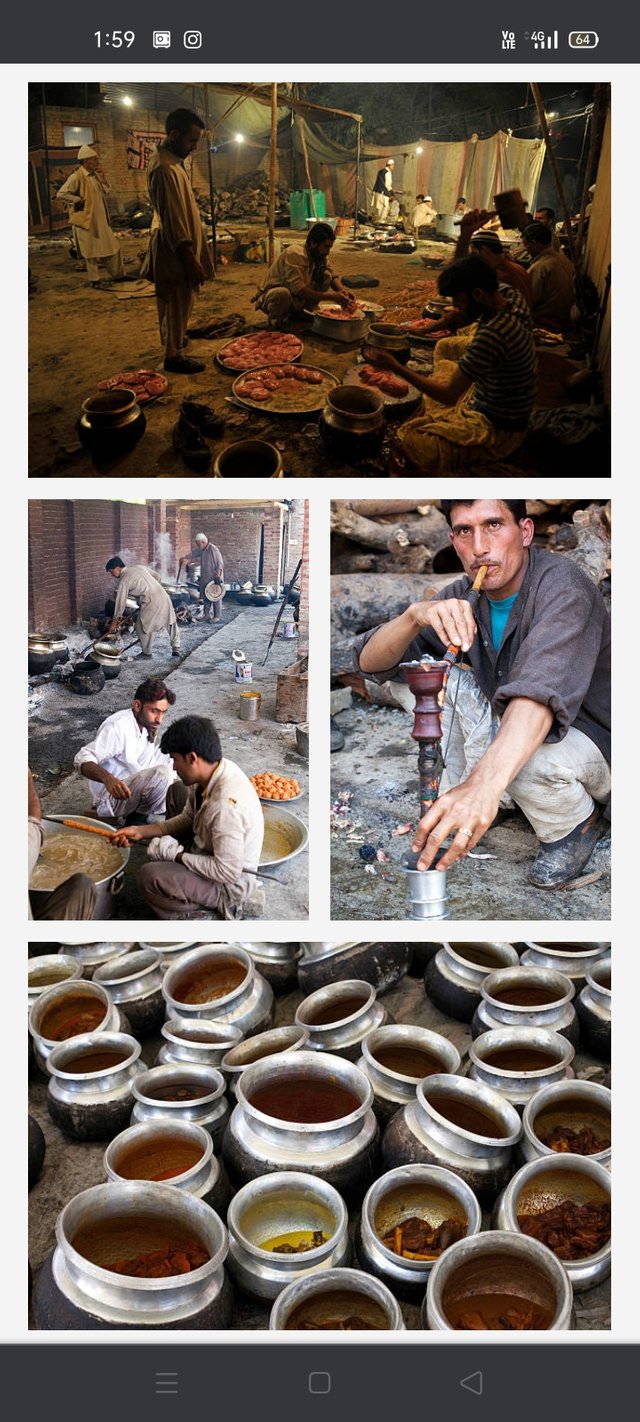
Methi Maaz
Methi maaz is a flavorful, delicious, and one-of-a-Kind dish. It is derived from the word “Methi”, which means “fenugreek” and “maaz” which means “meat”. This flavoured gravy is made up of lamb stomach and intestines, that is chopped into small pieces and cooked in dry Fenugreek leaves. The fenugreek leaves add an amazing fragrance and distinct flavour.
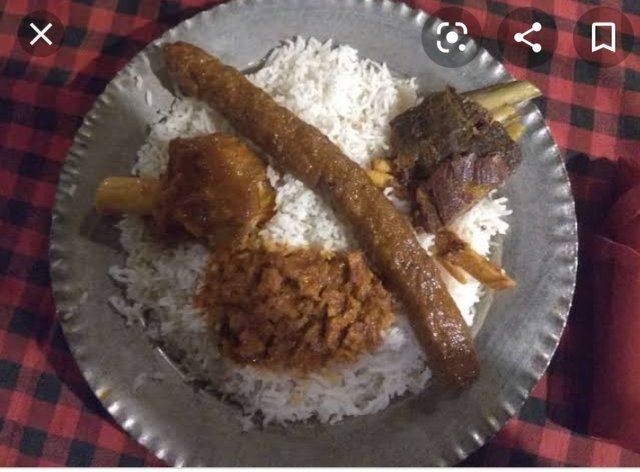
Kabab/Seekh Kabab
It’s one of the fantastic dishes of the wazwan. The origin of Seekh kebab is credited to the medieval fighters who used to roast meat on their swords in the open fire. Traditionally the meat used for kebeb is mostly lamb or sheep, however beef or buffalo are also occasionally utilized according to local and regional tastes. Kababs are made up of lean ground meat that is minced on a butcher block/chopping block with a cleaver. Eggs are mixed along with spice blends while mincing. The minced meat is then wrapped around iron bars or skewers and grilled on hot coals, grilling on a coal fire gives them a lovely smoky flavor. Typically kebabs are cooked directly on charcoal, but nowadays they are also prepared by microwave grilling, flame broiling, roasting, etc..
Tabak Maaz
It is the most popular and unique product of wazwan. In this dish, the ribs of sheep are cut into medium pieces and marinated in yogurt with spices and afterward simmered till it becomes delicate. It’s then shallow fried in clarified butter over medium heat till it becomes crisp and golden brown in color. It becomes crispy in nature and served as dry pieces. It tastes absolutely divine, and the crunchy texture pulls you towards another bite.
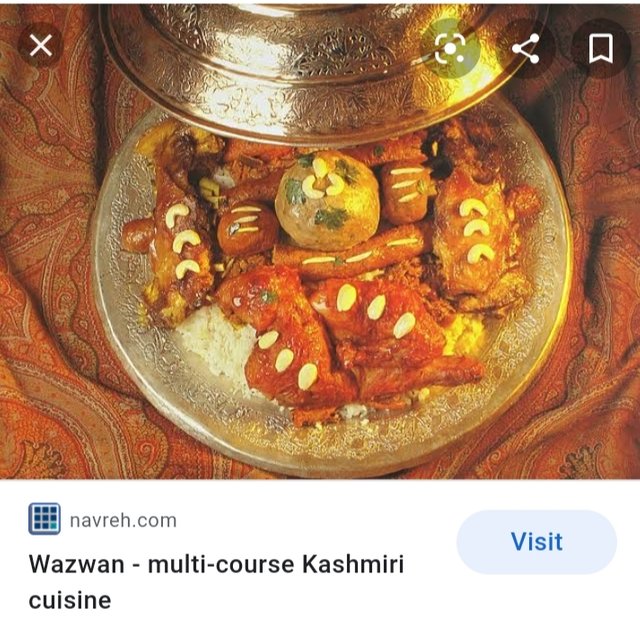
Rishta/Meatball
The preparation of a classic meatball requires an extraordinary skill. It is a restructured meat product typically red in color, served with red gravy. These smooth meatballs are made with boneless meat, which is manually pounded with a specially designed wooden mallet over a stone. While mincing the meat, fat, spices and eggs and are added to it. It is also important to add fat, adding fat makes it very tasty and soft. The meat mixture is then gently rolled between palms to form a round meatball. The meatballs are then prepared in red-colored spicy gravy. A dried cockscomb flower is specially used to enhance its color and flavor.
Rogan Josh
It is one of the signature recipes of royal cuisine known more for its color. It is derived from the word “Rogan” which means “oil” and “Josh” which means “heat”. This tempting dish is traditionally cooked in oil at intense heat. Rogan josh is a red hot meat product, in which tender lamb is infused with few exotic ingredients. Part of lamb is slowly cooked in a flavourful red gravy, loaded with layers of clarified butter and stirred occasionally until the mutton is tender and produce perfect thick gravy. The vibrant red color comes from the dried red cockscomb flower and Kashmiri red chilli powder, Sometimes saffron is used to get a color. In spite of including a lot of spices and chilies, the dish is mildly hot. It is very healthy and low-cal.
Aab Gosht
Aab gosht is one of the most liked dishes of Kashmiri cuisine. It’s a simple dish as compared to other dishes in Wazwan, yet very delicious and mild. This milk-based meat curry is cooked with a sweet milk gravy without hot spices. For the preparation of this juicy dish, meat is boiled in water and flavored with few spices, after that milk is boiled along with cardamom and dark peppercorns until reduced to half. When the meat is tender, white creamy milk is added and stirred around over a gentle heat until it cooks well. If you are a Non-spicy food Lover and you cannot handle the heat then, you will love this milk-based sauce.
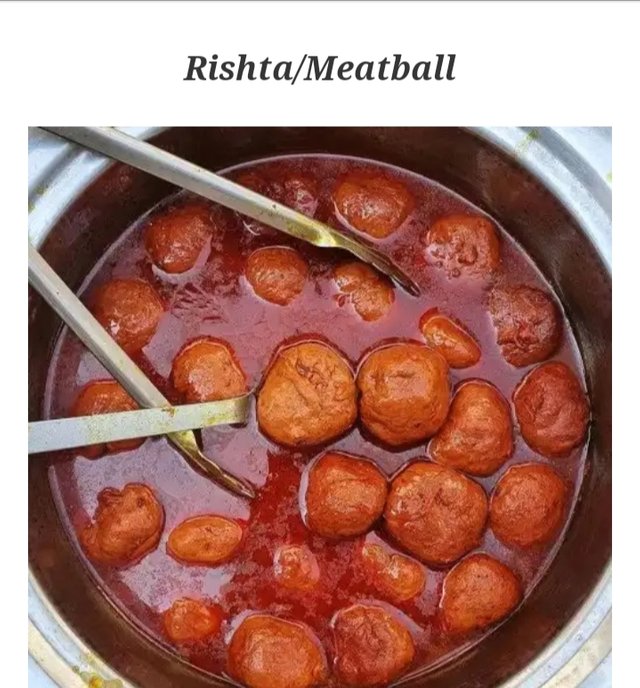
#kashmiri wazwan ,,,. #steemitfood
#foodworld ,,,,,#invoke this culture.
Hello :
In the SteemFoods Community, you can only share the photos you take and the content you have prepared. It is forbidden to share content prepared with the use of copyrighted photographs on the Internet. As an extra, none of the articles in this post belong to you and you have plagiarized over 90%. Plagiarism is prohibited on the Steemit platform. This is the first warning.
You can get more detailed information about SteemFoods Community by reviewing the post below.
Downvoting a post can decrease pending rewards and make it less visible. Common reasons:
Submit
You can not force
Downvoting a post can decrease pending rewards and make it less visible. Common reasons:
Submit